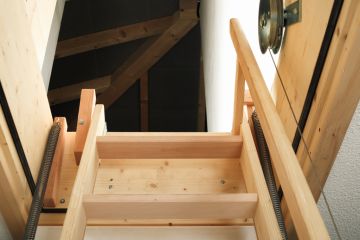Is Canberra on track for a bumper year?
A renewed confidence has shone on the Canberra property sector throughout 2017 and it looks set to continue.
The current state of the market is a far cry from the shakiness that was displayed only a few years ago. The conditions reflected the underperforming local economy and public sector job cuts that undoubtedly hampered buyer and seller confidence. Certainty has returned following this period of sluggish growth that was experienced in 2013-14.
Sellers have had good reason to feel more confident this year: the 2017 March quarter notched the highest annual house price gain since 2010, almost achieving double-digit growth at 9.9 per cent. The strong annual gain during the March quarter pushed the median house price above $700,000 for the first time. Sydney house prices broke a $700,000 median in 2013 and Melbourne in 2015.
The September quarter fell marginally behind the March peak, pushing Canberra’s median house price to a new high of $714,975, moving ahead by 9.1 per cent a year. The annual growth recorded over the September 2017 quarter set Canberra as the third top performing Australian city. Melbourne and Hobart were the only cities to record double-digit annual growth in the September quarter. Canberra’s track record so far this year provides the foundations for robust house price gain in the final quarter of 2017.
More than a year has passed since the Reserve Bank of Australia moved interest rates lower: the further away from a rate cut the less capacity it has to spark market activity, fuel the housing market and prices. Despite the banks decision to make out-of-cycle rate hikes, comparatively interest rates are low, which has helped to maintain an element of momentum in the Canberra housing market.
This momentum is evident through the elevated level of demand. Mortgage commitments jumped annually by 7.1 per cent to almost 11,000 owner-occupied loans financed in the ACT during the first ten months of the year, providing an additional 726 buyers compared to 2016. Entry-level participation provided the biggest boost, with a further 448 first-home buyers and 278 changeover buyers compared to the corresponding period the year prior. During the five months to October, first-home buyers have accounted for about 20 per cent of the owner-occupied mortgage commitments financed. This has provided the highest entry-level participation rate since 2013.
Market buoyance is anticipated to remain in to 2018 – dependent upon monetary policy and local economic conditions. Aggressive interest-rate hikes could dash the buyer and seller sureness evident in the current market. Realistically, a forceful rate move is unlikely given the lack of wages growth and the nation’s rising household debt. These have been two key considerations that have impacted the board’s decision to kept official cash interest rates at 1.5 per cent since August 2016.
The great debate remains heated as when the next rate hike will take place. If the speculative rate rise ensues and wages growth remains flat, it will create a tough environment for homeowners, particularly for those who have overextended. Several notable economists have tipped a rate move north during the latter part of 2018. Forecasts constantly alter but one theme that appears consistent is the prediction of rate hikes further into 2018 and perhaps even 2019.
We recommend
We thought you might like
States
Capital Cities
Capital Cities - Rentals
Popular Areas
Allhomes
More
- © 2025, CoStar Group Inc.







